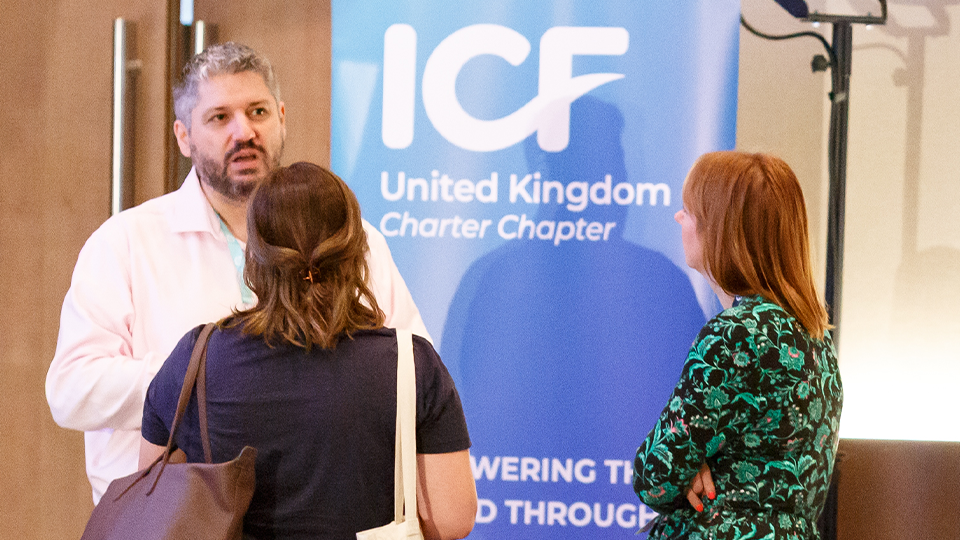

Learning to be a great coach is like learning how to draw a standard horse so that one day you can create a series of multicoloured flying unicorns.

Yesterday I was running a supervision session for the fabulous OL15 cohort on our flagship ICF-accredited programme in business and personal coaching. This cohort has finished module one (so one third) of the programme and I noticed something that inspired me to write about what usually happens to people when they start learning to coach.
They lose most of their personality.
Learning the form and the technical skill of effective coaching takes thought and can feel really “clunky.” On top of that, while you are concentrating hard on making sure that your question is open and clean, your attention is not as clearly focused upon your client, meaning you might feel a bit robotic.
My usual go-to metaphor for this is learning to drive and having to think so hard about where the gears are, you sometimes forget to look at the road. You have to spend time driving in this clunky fashion in order to really get a hang of it, and only once you have those technical skills down can you really become a master of the road.
However, today, I have a different metaphor for you. After this supervision session, I went downstairs, and my daughter was drawing this picture. It blew my mind.
Only a few weeks ago, her “y” letters were absolutely and completely standard. Copied a thousand times from a book. She only learned how to draw around a stencil a couple of weeks back. Steadily practising how to hold it still while moving the pencil around.
Today, she picked up a unicorn badge she has, used it as a stencil four times in a specific way, and wrote her name with a fancy “y.” Now she knows the mechanics, she can start to show off her personality. She found practising her letters a grind, and she found drawing round stencils frustrating to begin with but look what she can do now.
Just to clarify, what you are looking at here is two flying unicorns. On one side they are flying at night, on the other side they are flying in the day. This may be my bias, but may I just say, what a joyous picture.
I get a similar sensation working with coaches learning their craft. Often, at the start, it can feel frustrating, and you can feel that what you are doing is a bit “grey” while you get your head around some of the principles. But once you have drawn around those stencils enough times, you don’t have to think about it anymore. It is then that you can start showing your personality, and it is then that you start to be effective. Skilfully using those technical skills, with enough confidence and ease to respond to your client as a human being.
It is okay to take your time and to be a bit clunky for a while. It is also okay to feel like most of your sessions are technically accurate but lacking a bit of personality. It is a necessary step in the process. The more you practice, the closer you get to your own version of a multicoloured flying unicorn.
By Ted Bradshaw PCC – Head of Academic Learning at Barefoot Coaching
PGDip in Cognitive Behavioural Therapy, CBT Therapist, Honorary Assistant Professor of Psychological Therapy at the University of Nottingham, PG Cert in Business & Personal Coaching
Ted Bradshaw is a cognitive behavioural therapist who has spent the last decade working with common mental health issues and helping people to find the best treatment for them. Ted also supervises and teaches therapists in order to develop their skills of diagnosis and treatment. Ted believes in putting things in simple, straightforward language and likes to use practical examples to bring theory to life.
"*" indicates required fields

Barefoot Coaching Ltd. Address: Unit 6E Boundary Court, Willow Farm Business Park, Castle Donington, Derbyshire, DE74 2NN
Registered in England and Wales No. 06932330. All content is the sole ownership of Barefoot Coaching Ltd. 2023.
Website by Saint Associates.
| Cookie | Duration | Description |
|---|---|---|
| cookielawinfo-checkbox-analytics | 11 months | This cookie is set by GDPR Cookie Consent plugin. The cookie is used to store the user consent for the cookies in the category "Analytics". |
| cookielawinfo-checkbox-functional | 11 months | The cookie is set by GDPR cookie consent to record the user consent for the cookies in the category "Functional". |
| cookielawinfo-checkbox-necessary | 11 months | This cookie is set by GDPR Cookie Consent plugin. The cookies is used to store the user consent for the cookies in the category "Necessary". |
| cookielawinfo-checkbox-others | 11 months | This cookie is set by GDPR Cookie Consent plugin. The cookie is used to store the user consent for the cookies in the category "Other. |
| cookielawinfo-checkbox-performance | 11 months | This cookie is set by GDPR Cookie Consent plugin. The cookie is used to store the user consent for the cookies in the category "Performance". |
| viewed_cookie_policy | 11 months | The cookie is set by the GDPR Cookie Consent plugin and is used to store whether or not user has consented to the use of cookies. It does not store any personal data. |